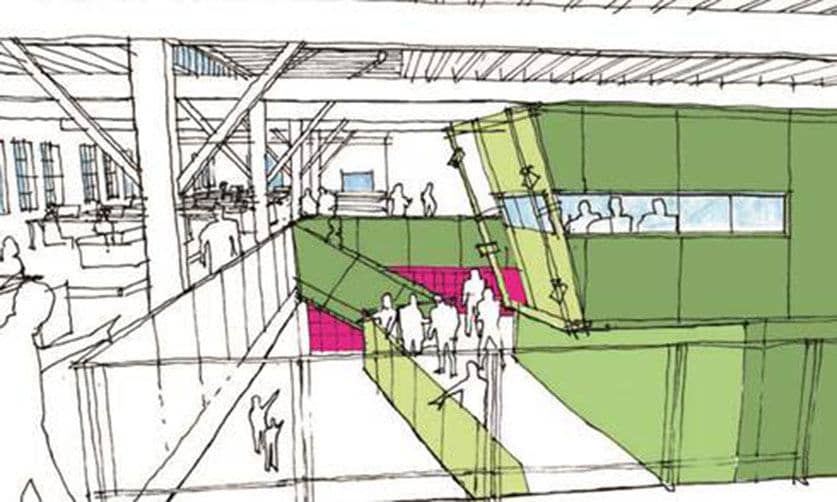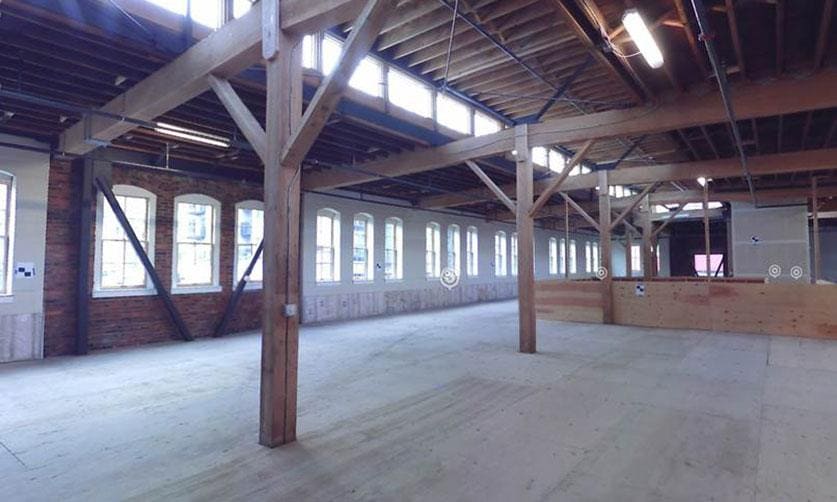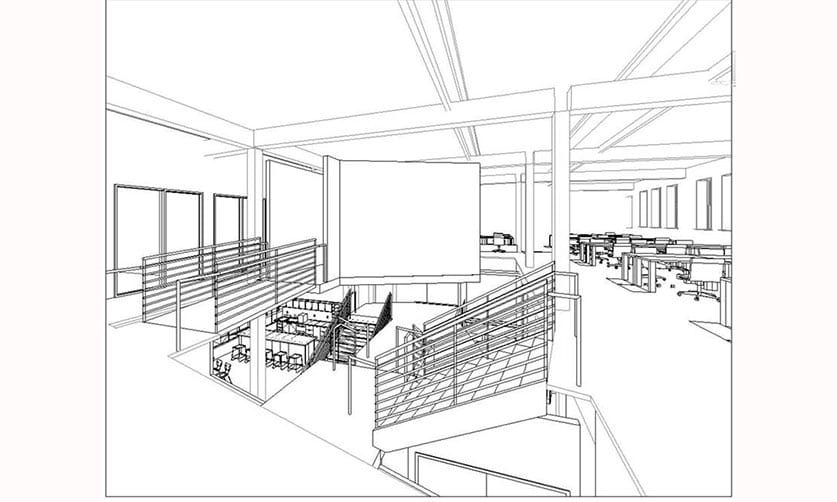
For a confidential technology client, the Seattle office of IA Interior Architects was contracted to transform a 100-year-old building with historically protected status into a naturally lit, vibrant workspace with an interstitial staircase to promote active transport. In addition, the end user for the space was the creative group within the company—many of whom were trained as architects and brought their ideas to the drafting table.
The century-old structure had been completely renovated within the last year, replete with structural updates and seismic upgrading, but the building was still a cold, dark shell. There were no HVAC systems, permanent lighting, or even finishes installed; it was essentially a blank slate, and the preference was to leave it as such. As IA’s design team got to know the end user, there were adjustments to the property owner’s original vision for the staircase: Originally it would have been positioned at the entrance for central access. But as the end users envisioned space use, the function of the stair shifted from solely floor-to-floor functionality to include the front and back of the building.

Photo courtesy IA Interior Architects.
“That stair serves an iconic role in the space and as a hub; a place where people can run into each other, as this will serve as the main circulation point between two floors” said Bonnie Volk, a job captain with IA Interior Architects who worked on the project. “The design also calls for a much larger opening, with a cantilevered volume for a conference room.”
Since much of the space was to be left as-is—even with a significant intervention of the staircase and cantilevered volume—it was important to model much more than a typical tenant improvement project. With all these components at play, the team’s use of Revit became integral to the successful delivery of clearly communicated design concepts in a timely fashion. And from a design tool perspective, the ability to insert all structural measures and forms helped the team accommodate exceptionally collaborative client participation.
“Going through several design iterations, and drawing in AutoCAD, I’d update lots of parts and pieces, but then I’d have to stitch it back together,” Volk explains. “In Revit you can look at these things in a 3D display, and multiple adjustments are achieved with a click of the mouse.”

Rendering by IA Interior Architects.
Because the floor-to-floor height is so tall—the continuous flight covers 16 vertical feet—the design team looked at ways to divide levels and provide intermediate landings. “We can really play with those landings and placements in Revit, where you just change a number and related updates are implemented by the program,” Volk says. “In AutoCAD, I’d have to change each element in three different drawings, rehash details, and do lots more stretching.”
Volk estimates the first draft of three dimensional architectural forms took about two hours to complete. She estimates almost twice that time would have been required in AutoCAD.
IA is a global firm of architects, designers, strategists, and specialists. We focus exclusively on environments through the lens of interior architecture—a radical idea in 1984, when IA was founded. We are highly connected agents of change, committed to creativity, innovation, growth, and community.
IA is a global firm of architects, designers, strategists, and specialists. We focus exclusively on environments through the lens of interior architecture—a radical idea in 1984, when IA was founded. We are highly connected agents of change, committed to creativity, innovation, growth, and community.

